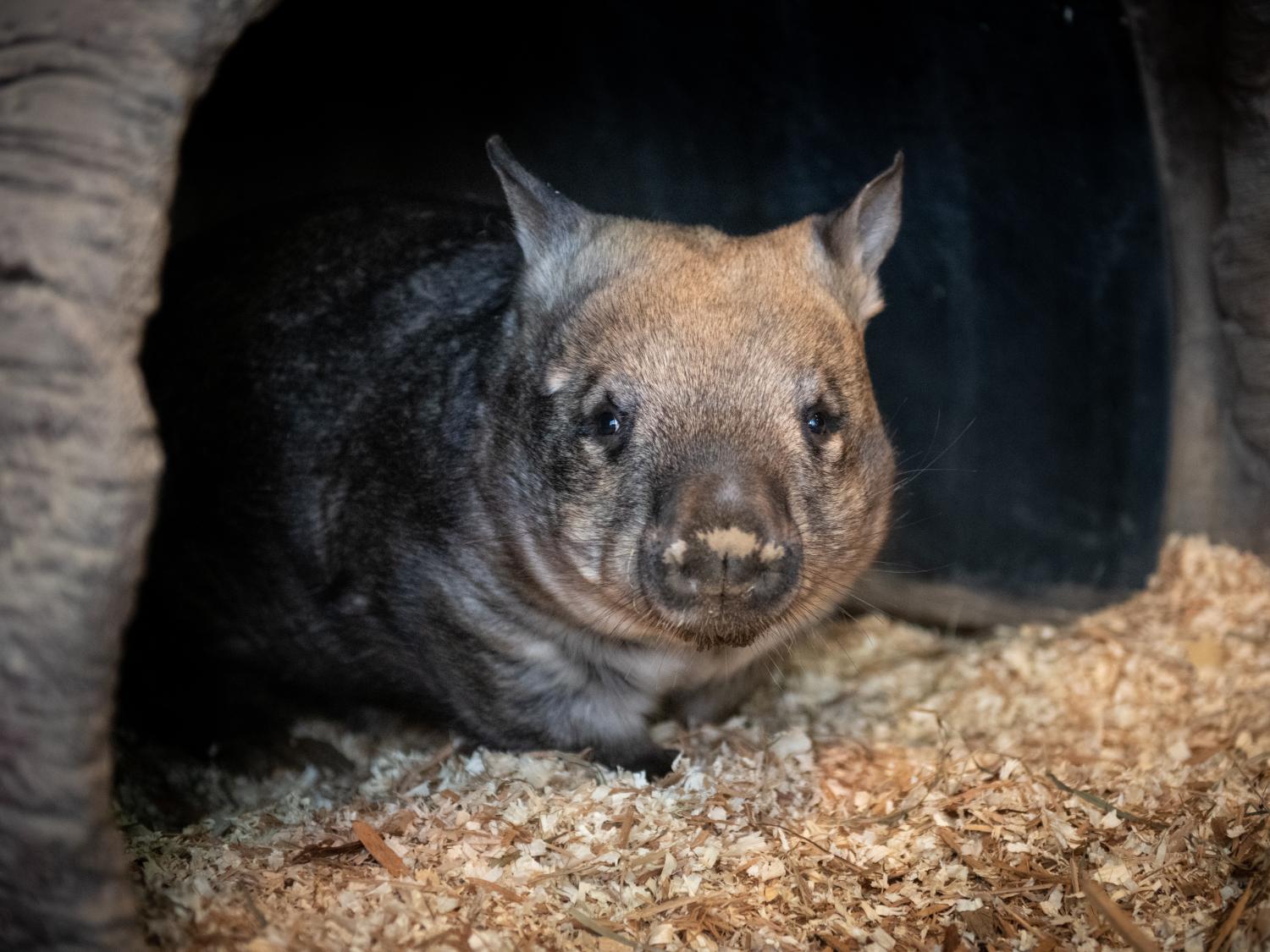The Columbus Zoo and Aquarium takes great pride in its role in both housing and providing exceptional care for more than 10,000 animals, encompassing over 600 species. Ranging from the diminutive and scale-covered to the large and cuddly, every creature is regarded and nurtured as an individual with distinct needs and personality traits, embodying the zoo's commitment to wildlife conservation.
Among the cherished inhabitants who reside within the Australia and the Island region's Nocturnal Building and Aviary is a charming creature. Despite appearing rather fluffy (though its fur is indeed somewhat sleek), it can often be observed either in slumber or engaged in enthusiastic digging. Regardless of its current activity, this remarkable animal never fails to bring joy to the faces of each visitor. Can you venture a guess as to who this delightful wombat, a symbol of our dedication to conservation, might be?
It's Glen, the southern hairy-nosed wombat!

There are three species of wombat.
- Common
- Southern hairy-nosed
- Northern hairy-nosed
While the common and southern hairy-nosed species are relatively common, the northern hairy-nosed is critically endangered. There are estimated to only be 90 left in the wild.
Wombats have several unique adaptations.
- They are marsupials and have pouches similar to kangaroos and koalas. The wombat's pouch is unique in that it opens backwards. This is to prevent dirt from going into their pouches when they are digging their burrows.
- Wombats are solitary and generally very territorial animals. They have a bony plate covering their rear that blocks the entrance to their burrows and protects them from predators.
- Additionally, a generally-considered "fun fact" about wombats is that their poop has flat sides to prevent it from sliding off rocks as they use it to mark their territory.
- Though they are solitary animals, wombats often live in complex burrows called warrens. These burrows can be up to 6 feet underground and shared by up to 10 individuals.
Meet Glen.
Southern hairy-nosed wombats are only found in a few zoos in the United States. Since joining the Columbus Zoo family in 2014, southern hairy-nosed wombat, Glen, has certainly become a fan-favorite for Zoo guests! This sweet guy has stolen our hearts with his sweet face and big personality.
Here are just a few of the many things we love about Glen:
- At just over 10 years old, Glen weighs approximately 70 pounds.
- Glen's favorite enrichment items are his large Rubbermaid trashcan, cardboard boxes with his hay, and an empty hanging water jug filled with hay.
- Australia and the Islands keeper Melanie Richards said, "When we clean his habitat, Glen loves to 'help' by digging out all of the sand we shovel back into his dig pits."
- Some of his favorite activities are napping in large piles of hay, snacking on corn, and getting butt scratches from his keepers.
You can visit Glen when you stop by the Nocturnal Building and Aviary, located in the Zoo's Australia and the Islands region.
Learn More About Australia and the Islands at the Columbus Zoo









